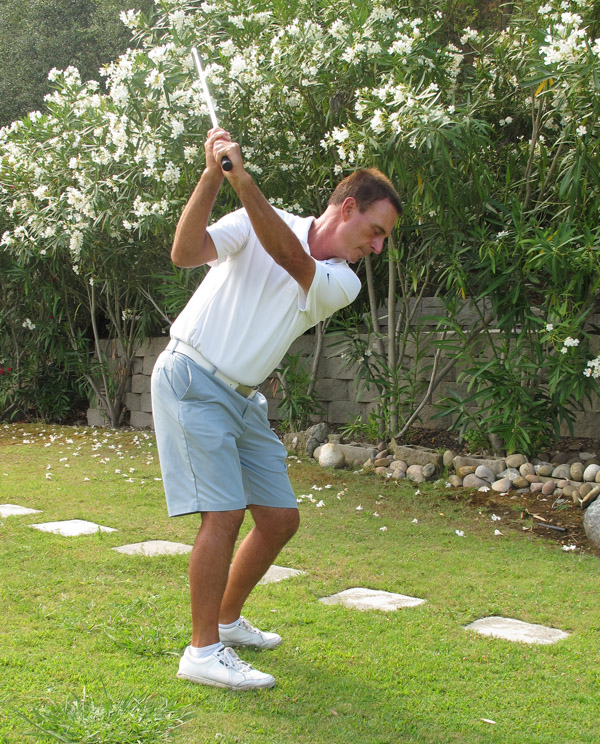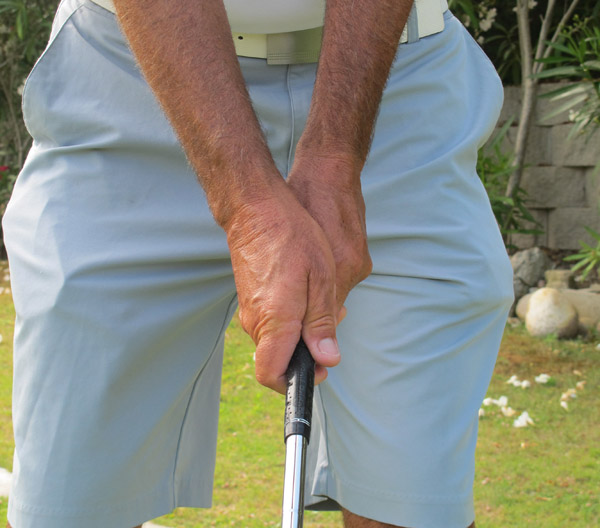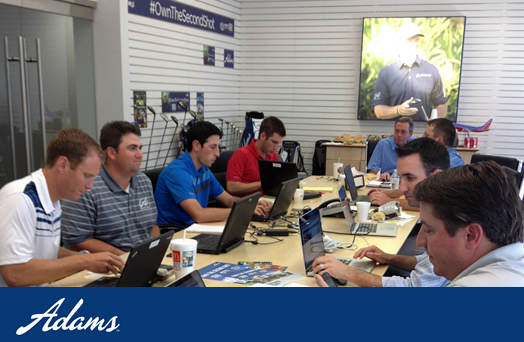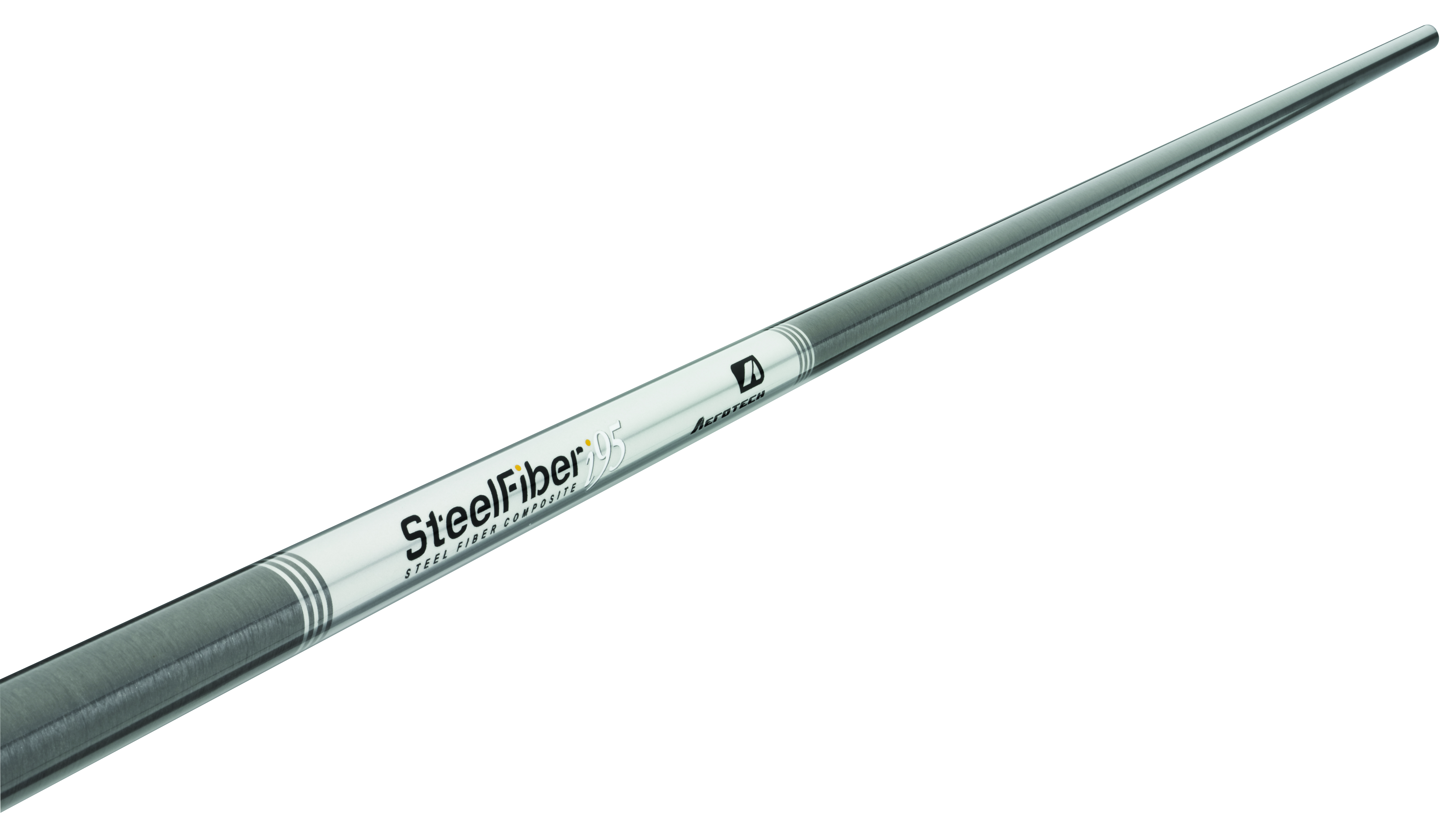Instruction
Q&A: Advice For Beginners From Mike Wydra

As a beginning golfer that is addicted beyond obsession with this wonderful sport, the search for nuggets of knowledge and insight into how to become a better player has been a passion of mine.
I was extremely fortunate that early in my struggles, I became a student of Coach Mike Wydra, UCSD head golf coach and one of a select few inductees to the Golf Coach Association Hall of Fame.
I recently sat down with him to pick his prodigious golf brain on just HOW a beginning golfer should approach learning the game, something I feel that has been somewhat neglected in existing literature.
Neil Crutchfield: First thing I wanted to ask you, what should beginning golfers be most aware of?
Mike Wydra: Golf is a technique-oriented game and people who have good hand-eye coordination don’t always excel at it. Probably the worst student I ever had was an Olympic decathlete who was a fantastic athlete but who wasn’t a good listener. He wanted to do what he felt was correct and he wasn’t interested in the technique — he thought he could conquer it like he’d conquered everything else, and so he became really quite a bad player as a result. So once you understand that there is a very specific technique, that there is something that you need to do and you need to learn it and you’re enamored with that, that’s a big deal.
NC: It sounds like you have to be really open to being wrong for a long time before you get it right.
MW: It’s a very frustrating sport — if you can’t take a little failure, golf’s not for you. I think that’s why you see so many people in the game who are of high character. They’ve gone through that. They understand that they have to persevere and you’ll come out the other side a better golfer and maybe even a better person because of it.
NC: Along these lines, what mindset should a beginning gofer adopt when striking out to learn the game? What kind of expectations?
MW: I think they key to that is where you are in your life. Your age, your body size and type, your flexibility, your coordination those kinds of things. How quick, fast and strong are you? If your talent set is limited there’s certainly lots of things you can still do to be very good at it, you shouldn’t sell yourself short. It depends upon more than anything else on your goals, what you want to do, and how often you’re willing to practice to get it done.
Your expectations — I’m borrowing this from Hogan’s book — that anyone of average body type, size and intelligence and who goes about it seriously I think should have no problem breaking 80 within a relatively short time. I would say between a year and two is very reasonable.
NC: What are common pitfalls that most beginning golfers encounter?
MW: Adults when they take the game up and they don’t want to embarrass themselves on the first tee. What happens to them then is that they get good enough at their long game quickly enough so that they could play if they had a short game, but actually they have just waited to embarrass themselves until they get to the green! It’s almost more frustrating to be right there and you can’t close the deal. So, all aspects of your game need to rise simultaneously.
NC: So you think there should be about a 50/50 split in practice between irons/woods and short game?
MW: I would say that the better you get the more time you spend within 50 yards of the green and certainly if you’re interested in scoring that’s a big, big part of what you need to do. You should get 50 yards away and say, “Oh boy, now I’m going to show everybody.” And most people get close to the green and say, “Oh no I hope I don’t mess it up.”
NC: Please don’t skull it!
MW: Exactly! So what I tell most people is that when you’re at the range you should hit half of your balls with your most lofted wedge and your driver and then the other half of the balls you should hit with all of your other clubs combined. And putting is another thing unto itself. The driver and the shortest wedge, those are the things you’ll need the most.
NC: At what point in a golfer’s learning process should they begin taking lessons? Getting fitted for a set of clubs?
MW: Well, it depends. Obviously there’s the monetary thing. But if you begin by playing poorly, if you just do what’s natural and you go out there and see how good you are before you get lessons, basically what happens is that you develop bad habits and then when the instructor gets you, the process is both getting the bad stuff out and the good stuff in at the same time which slows things down.
Club fitting — when you first get started you’re going to be very hard on your golf clubs. Your first set of clubs, it’s not that important to have really good clubs. A good piece of advice: It’s better to get a high-quality brand of club that’s used rather than something that’s shiny and new but maybe low quality.
NC: What should a beginning golfer look for in an instructor when looking for lessons?
MW: I think almost universally the best combination is someone who can play and someone who can teach. If you can find an instructor who you’ve checked out their resume and you know that they have played at a high level and they’ve taught at a high level, so you look at do they have successful students who have won tournaments? That’s the best possible combo.
NC: What are the most important principles to developing a solid, repeatable swing?
MW: All of the best players in the world have certain things in common. So if you see a Jim Furyk and you see a Rory McIlroy and you see the two swings and you think “Oh my god nothing could be more different than those two swings!” I would say that if you looked at them from halfway down in the downswing to halfway through the follow-through they look almost exactly the same. So if you look at videos and sequence photos and you see that one person’s doing one thing and that another person’s doing another thing, well then that’s style. But if you see them and everyone’s doing the same thing, that’s fundamental.
NC: What you say your top three to five most important fundamentals are?
MW: Grip, absolutely. There’s an old saying that occasionally you’ll see someone who’s a pretty good player who has a bad grip but you’ll never see someone who has a good grip that isn’t a good player.
If I go out to dinner with someone that says they’re a golfer I say “Show me your grip” — I can tell them normally within a shot or two what their index is just by looking at it. They always seem shocked by that but really it tells a lot about what is going on –- nearly everybody puts their hands on the club either poorly or improperly and they’re making it harder for themselves.
Second –- everyone is a scooping bastard. I mean, if you’ve ever taken a shoveful of dirt and thrown it over your shoulder or flipped a burger on a grill your hand-eye coordination is telling you that ball that you just topped you need to get under the next one better — and that’s exactly the opposite of what you need to do.
And that speaks to the flat left wrist. If you’re going to be ahead of it the only way that you can square the club up with a good grip is to change your wrist as you go through –- to supinate your wrist. If we went to Torrey Pines today and we saw high-speed photos of everyone hitting the ball off the first tee, we might not see a perfect one all day. But if you went to the final round of a PGA Tour event and took high-speed photos you wouldn’t see one all day long that wasn’t absolutely perfect.
NC: How can beginning golfers learn how to learn in between lessons when our coach isn’t around?
MW: Basically, you have to be a good observer. The tendency is to have an emotional reaction to every shot you hit. You cannot be mad, you cannot be sad, you cannot be glad about anything. But to first say, “What did the club do the ball to make the ball do that?” and then to understand the physics of impact and secondly say, “What did my body do to make the club do what it just did?” If you just jump from the shot right back to your swing it can be very confusing to the beginning player. So you have to really stop and say, “Woah, what just happened there? I sliced it that much, the club was that open? OK now, what could I have done that could have made the club be that open?”
So be a good observer, understand the physics of impact and then once you know the cause and effect relationships you can make big, very valid adjustments quickly and easily.
NC: What parting advice would you like to give to my fellow newbie golfers?
MW: A little knowledge is dangerous. You should try to learn everything you can about the game, really become a student of the game so you’ll enjoy every practice session you have, you’ll get better every time you go out, and you’ll continue to learn and continue to improve really for your entire life. That’s the thing -– if you don’t know why you hit a bad shot, you’ll continue to hit the bad shots. So if you’re not interested in knowing as much as you can about the game, we’ll just have another beer, buy the newest driver that’s out there…
NC: Flirt with the cart girl…
MW: That whole kinda thing. A lot of people say, “Ahh I’m just out for the exercise.” What a load of bull that is. Everybody would give almost anything to get better but they’re afraid to take their ego and put it on the backburner. So if you really want to approach the game properly get some quality instruction and enjoy the process of getting better, and you’ll be a golfer for life.
- LIKE32
- LEGIT5
- WOW1
- LOL0
- IDHT3
- FLOP0
- OB0
- SHANK2
Instruction
The Wedge Guy: The easiest-to-learn golf basic

My golf learning began with this simple fact – if you don’t have a fundamentally sound hold on the golf club, it is practically impossible for your body to execute a fundamentally sound golf swing. I’m still a big believer that the golf swing is much easier to execute if you begin with the proper hold on the club.
As you might imagine, I come into contact with hundreds of golfers of all skill levels. And it is very rare to see a good player with a bad hold on the golf club. There are some exceptions, for sure, but they are very few and very far between, and they typically have beat so many balls with their poor grip that they’ve found a way to work around it.
The reality of biophysics is that the body moves only in certain ways – and the particulars of the way you hold the golf club can totally prevent a sound swing motion that allows the club to release properly through the impact zone. The wonderful thing is that anyone can learn how to put a fundamentally sound hold on the golf club, and you can practice it anywhere your hands are not otherwise engaged, like watching TV or just sitting and relaxing.
Whether you prefer an overlap, interlock or full-finger (not baseball!) grip on the club, the same fundamentals apply. Here are the major grip faults I see most often, in the order of the frequency:
Mis-aligned hands
By this I mean that the palms of the two hands are not parallel to each other. Too many golfers have a weak left hand and strong right, or vice versa. The easiest way to learn how to hold the club with your palms aligned properly is to grip a plain wooden ruler or yardstick. It forces the hands to align properly and shows you how that feels. If you grip and re-grip a yardstick several times, then grip a club, you’ll see that the learning curve is almost immediate.
The position of the grip in the upper/left hand
I also observe many golfers who have the butt of the grip too far into the heel pad of the upper hand (the left hand for right-handed players). It’s amazing how much easier it is to release the club through the ball if even 1/4-1/2″ of the butt is beyond the left heel pad. Try this yourself to see what I mean. Swing the club freely with just your left hand and notice the difference in its release from when you hold it at the end of the grip, versus gripping down even a half inch.
To help you really understand how this works, go to the range and hit shots with your five-iron gripped down a full inch to make the club the same length as your seven-iron. You will probably see an amazing shot shape difference, and likely not see as much distance loss as you would expect.
Too much lower (right) hand on the club
It seems like almost all golfers of 8-10 handicap or higher have the club too far into the palm of the lower hand, because that feels “good” if you are trying to control the path of the clubhead to the ball. But the golf swing is not an effort to hit at the ball – it is a swing of the club. The proper hold on the club has the grip underneath the pad at the base of the fingers. This will likely feel “weak” to you — like you cannot control the club like that. EXACTLY. You should not be trying to control the club with your lower/master hand.
Gripping too tightly
Nearly all golfers hold the club too tightly, which tenses up the forearms and prevents a proper release of the club through impact. In order for the club to move back and through properly, you must feel that the club is controlled by the last three fingers of the upper hand, and the middle two fingers of the lower hand. If you engage your thumbs and forefingers in “holding” the club, the result will almost always be a grip that is too tight. Try this for yourself. Hold the club in your upper hand only, and squeeze firmly with just the last three fingers, with the forefinger and thumb off the club entirely. You have good control, but your forearms are not tense. Then begin to squeeze down with your thumb and forefinger and observe the tensing of the entire forearm. This is the way we are made, so the key to preventing tenseness in the arms is to hold the club very lightly with the “pinchers” — the thumbs and forefingers.
So, those are what I believe are the four fundamentals of a good grip. Anyone can learn them in their home or office very quickly. There is no easier way to improve your ball striking consistency and add distance than giving more attention to the way you hold the golf club.
More from the Wedge Guy
- The Wedge Guy: Golf mastery begins with your wedge game
- The Wedge Guy: Why golf is 20 times harder than brain surgery
- The Wedge Guy: Musings on the golf ball rollback
- LIKE85
- LEGIT13
- WOW6
- LOL1
- IDHT0
- FLOP4
- OB1
- SHANK8
Instruction
Clement: Stop ripping off your swing with this drill!

Not the dreaded headcover under the armpit drill! As if your body is defective and can’t function by itself! Have you seen how incredible the human machine is with all the incredible feats of agility all kinds of athletes are accomplishing? You think your body is so defective (the good Lord is laughing his head off at you) that it needs a headcover tucked under the armpit so you can swing like T-Rex?
- LIKE0
- LEGIT2
- WOW2
- LOL0
- IDHT0
- FLOP0
- OB0
- SHANK2
Instruction
How a towel can fix your golf swing

This is a classic drill that has been used for decades. However, the world of marketed training aids has grown so much during that time that this simple practice has been virtually forgotten. Because why teach people how to play golf using everyday items when you can create and sell a product that reinforces the same thing? Nevertheless, I am here to give you helpful advice without running to the nearest Edwin Watts or adding something to your Amazon cart.
For the “scoring clubs,” having a solid connection between the arms and body during the swing, especially through impact, is paramount to creating long-lasting consistency. And keeping that connection throughout the swing helps rotate the shoulders more to generate more power to help you hit it farther. So, how does this drill work, and what will your game benefit from it? Well, let’s get into it.
Setup
You can use this for basic chip shots up to complete swings. I use this with every club in my bag, up to a 9 or 8-iron. It’s natural to create incrementally more separation between the arms and body as you progress up the set. So doing this with a high iron or a wood is not recommended.
While you set up to hit a ball, simply tuck the towel underneath both armpits. The length of the towel will determine how tight it will be across your chest but don’t make it so loose that it gets in the way of your vision. After both sides are tucked, make some focused swings, keeping both arms firmly connected to the body during the backswing and follow through. (Note: It’s normal to lose connection on your lead arm during your finishing pose.) When you’re ready, put a ball in the way of those swings and get to work.

Get a Better Shoulder Turn
Many of us struggle to have proper shoulder rotation in our golf swing, especially during long layoffs. Making a swing that is all arms and no shoulders is a surefire way to have less control with wedges and less distance with full swings. Notice how I can get in a similar-looking position in both 60° wedge photos. However, one is weak and uncontrollable, while the other is strong and connected. One allows me to use my larger muscles to create my swing, and one doesn’t. The follow-through is another critical point where having a good connection, as well as solid shoulder rotation, is a must. This drill is great for those who tend to have a “chicken wing” form in their lead arm, which happens when it becomes separated from the body through impact.
In full swings, getting your shoulders to rotate in your golf swing is a great way to reinforce proper weight distribution. If your swing is all arms, it’s much harder to get your weight to naturally shift to the inside part of your trail foot in the backswing. Sure, you could make the mistake of “sliding” to get weight on your back foot, but that doesn’t fix the issue. You must turn into your trial leg to generate power. Additionally, look at the difference in separation between my hands and my head in the 8-iron examples. The green picture has more separation and has my hands lower. This will help me lessen my angle of attack and make it easier to hit the inside part of the golf ball, rather than the over-the-top move that the other picture produces.


Stay Better Connected in the Backswing
When you don’t keep everything in your upper body working as one, getting to a good spot at the top of your swing is very hard to do. It would take impeccable timing along with great hand-eye coordination to hit quality shots with any sort of regularity if the arms are working separately from the body.
Notice in the red pictures of both my 60-degree wedge and 8-iron how high my hands are and the fact you can clearly see my shoulder through the gap in my arms. That has happened because the right arm, just above my elbow, has become totally disconnected from my body. That separation causes me to lift my hands as well as lose some of the extension in my left arm. This has been corrected in the green pictures by using this drill to reinforce that connection. It will also make you focus on keeping the lead arm close to your body as well. Because the moment either one loses that relationship, the towel falls.


Conclusion
I have been diligent this year in finding a few drills that target some of the issues that plague my golf game; either by simply forgetting fundamental things or by coming to terms with the faults that have bitten me my whole career. I have found that having a few drills to fall back on to reinforce certain feelings helps me find my game a little easier, and the “towel drill” is most definitely one of them.
- LIKE12
- LEGIT2
- WOW2
- LOL0
- IDHT0
- FLOP2
- OB0
- SHANK8
-

 19th Hole1 week ago
19th Hole1 week agoDave Portnoy places monstrous outright bet for the 2024 Masters
-

 19th Hole3 weeks ago
19th Hole3 weeks agoThings got heated at the Houston Open between Tony Finau and Alejandro Tosti. Here’s why
-

 19th Hole2 weeks ago
19th Hole2 weeks agoTiger Woods arrives at 2024 Masters equipped with a putter that may surprise you
-

 19th Hole2 weeks ago
19th Hole2 weeks agoReport: Tiger Woods has ‘eliminated sex’ in preparation for the 2024 Masters
-

 19th Hole5 days ago
19th Hole5 days agoTwo star names reportedly blanked Jon Rahm all week at the Masters
-

 19th Hole5 days ago
19th Hole5 days agoNeal Shipley presser ends in awkward fashion after reporter claims Tiger handed him note on 8th fairway
-

 19th Hole4 days ago
19th Hole4 days agoReport: LIV Golf identifies latest star name they hope to sign to breakaway tour
-

 19th Hole2 weeks ago
19th Hole2 weeks agoAddiction, spinal fusion, and scam artists – Everything Anthony Kim revealed in candid interview with David Feherty























Nimrod
Jul 25, 2013 at 6:11 am
Man I wish I could’ve been breaking 80 after a year and a half
marc james
Jul 22, 2013 at 3:01 pm
Awesome read. He gives lessons at the range that’s only 5 minutes away from me! Small world. I’ve witnessed him giving lessons to junior players and has a very calm vibe about him. Very nice guy from what I observed.
Neil
Jul 22, 2013 at 3:32 pm
I’m there pretty much every day – and yeah he’s a cool dude. If you take lessons tell him you saw this article. 🙂
naflack
Jul 21, 2013 at 4:01 pm
whats the best way to get your wife to play good golf?
always leave room for optimism by putting it off another year.
Austin
Jul 20, 2013 at 6:59 am
would be interested in hearing/seeing his explanation for a proper grip. thanks.
yo!
Jul 20, 2013 at 8:07 pm
well, you have the vardon, interlocking, baseball, furyk grip, and they can be strong, weak or neutral. everything else is “bad”. oh, and if you’re not jim furyk, the furyk grip is bad. 🙂
Neil
Jul 22, 2013 at 3:33 pm
Near as I can tell it’s pretty much what Hogan espouses in his book, if you have a copy handy.
J
Jul 19, 2013 at 8:46 pm
Way to represent SD